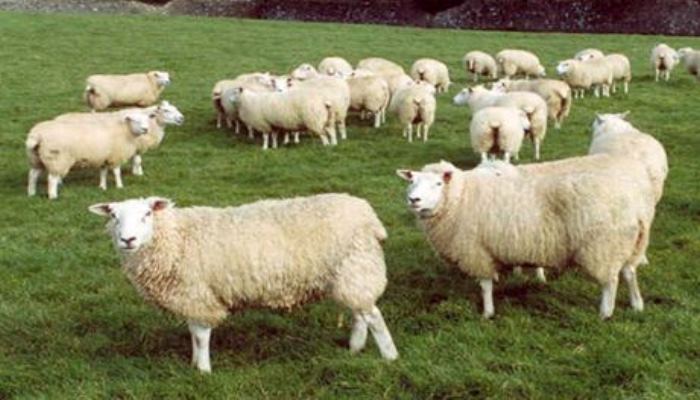15 June 2021
Blowfly Strike Control Options

Flystrike may occur on any part of the body, most commonly around the tail, where the fleece has become soiled or infected with bacteria. Eamonn Dempsey, Teagasc Advisor Tralee, talks about flystrike prevention options in the month of June, normally a high risk time for blowfly strike in sheep
Commonly affected areas
Sheep are most commonly struck around the tail where the wool becomes soiled by faeces and urine. Castration, tail wounds, clipping wounds, head wounds on fighting rams or any open wound will attract flies, particularly if infected by bacteria. The Month of June is normally a high risk period for blowfly strike, however with changing weather patterns it is not uncommon to hear of flystrike as early as March or as late as October. The smell of footrot is particularly attractive to flies, especially blow flies and often the fleece over the chest wall becomes contaminated from the infected foot when the sheep lies down.
Maggot Stages 1 – 3
The green bottle lay eggs on organic matter around the tail area and within 12 to 24 hours those eggs will hatch to produce stage 1 maggots with no mouth parts. These stage 1 maggots quickly develop to stage 2 maggots with mouth parts which are very active and secrete enzymes which liquefy the skin and flesh of the sheep upon which they are feeding. The stage 2 maggots will then develop to mature stage 3 maggots which crawl or fall off the sheep and pupate in the soil. Blow fly strike prevention is important to keep fly numbers down as flies lay thousands of eggs; it is easy to see why the population of blow flies increases so rapidly under warm, humid weather conditions.
Blowfly population increases rapidly under warm, humid weather conditions
Regular monitoring of your flock is important to identify symptoms of blowfly strike which include agitation, matted and discoloured wool and a distinctive smell. The main objective is not to allow sheep to become susceptible to attack before treatment and early intervention will lower the fly population later in the season. Shorn sheep and lambs with short fleeces are not usually attacked, but as the fleece grows so too does the risk of fly strike.
- Clik and Clik Extra can be applied on the same day as shearing.
- If treating with Clikzin at least 3 weeks wool regrowth is needed.
Good grassland management where sheep and lambs are moved regularly and treated for worms and lameness will ensure good parasite control and reduce the incidence of blowfly strike.
Preventative pour-ons
The main two pour-on’s for prevention are Insect Growth Regulator and Pyrethroids.
Insect Growth Regulator (Active Ingredient – Dicyclanil) has a withdrawl period of 7 – 40 days, which basically stop first stage larvae from developing into the destructive second-stage larvae and so prevent the disease by breaking the blowfly life-cycle.
Insecticidal Cypermethrin based products (Pyrethroids). The second type of pour-on for the prevention of blow fly strike in sheep are Insecticidal Cypermethrin based products (Pyrethroids). These basically treat and prevent new strike. Choose a product suitable for your sheep production system with consideration for withdrawl dates, period of cover and the need for repeat applications.
Pour-on products are expensive, and efficacy of product will depend on applying to clean sheep on a dry day with the correct application equipment.
Four Stroke Application
Use a four stroke procedure in applying the pour on.
- For the first stroke hold the pour-on gun twelve inches from the fleece and spray from the back of neck to mid back
- The second stroke will go from the mid back to the rump
- The third stroke will be up one side towards the tail
- The fourth and final stroke will be up the other side towards the tail
Bring the third and fourth stroke upwards to allow waste product to land on the back as opposed to the ground. Ensure the strokes overlap and try to avoid sheep rubbing off fences/gates as product needs time to bind to the fleece.
Plunge dipping
Plunge dipping is also an effective method of ecto- parasite control, however if using this method consideration should be given to the planned disposal of the used sheep dip which contains extremely toxic chemicals.
You might also like to read Preventing Blowfly strike in Sheep this summer and Getting Lamb Performance Back on Track
Teagasc Advisors are regular contributors of articles to Teagasc Daily. You can contact any of our Teagasc offices using this link Teagasc Advisory Regions here
